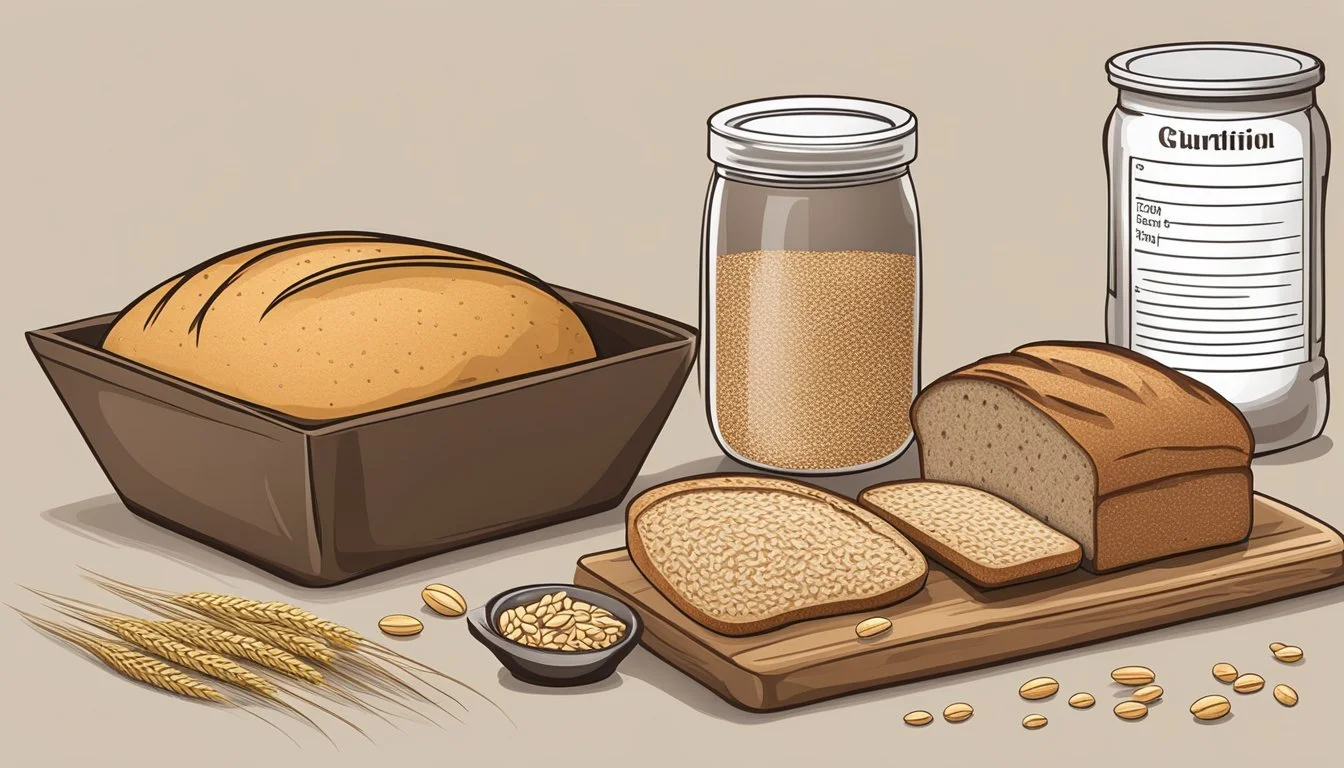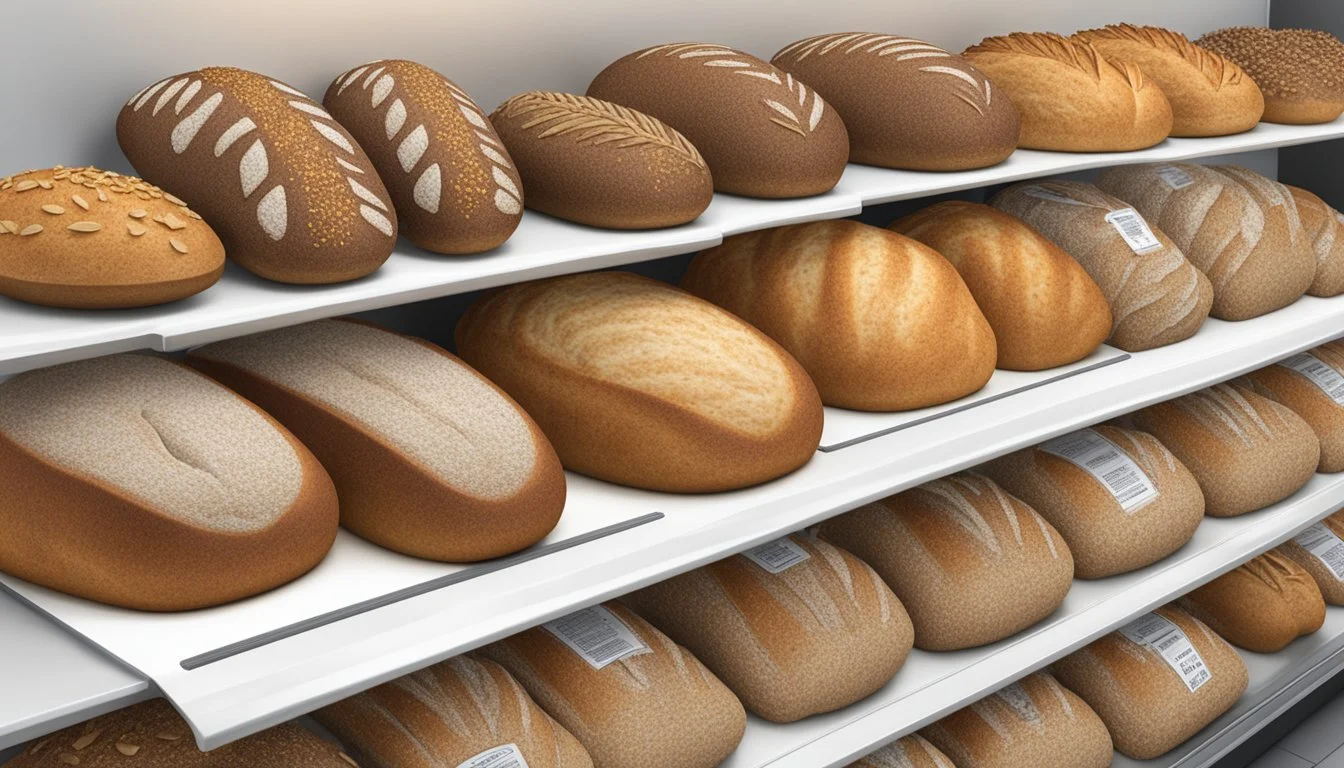Can Diabetics Eat Multigrain Bread?
Understanding the Impact on Blood Sugar Control
Individuals with diabetes must carefully consider their dietary choices to effectively manage blood sugar levels. The inclusion of bread (What wine goes well with bread?) in a diabetic diet is a common topic of discussion, often raising concerns about the impact of carbohydrates on glycemic control. If chosen wisely, certain types of bread can indeed fit into a healthful eating plan for those managing diabetes.
Multigrain bread is one such option that stands out due to its nutritional profile. Unlike white bread, which is made from highly processed white flour contributing to rapid spikes in blood sugar, multigrain bread typically consists of a variety of whole grains. These grains provide fiber, vitamins, and minerals, which contribute to a lower glycemic index and slower absorption of glucose, making it a more suitable choice for diabetics. It's important for consumers to be diligent, however, as some breads labeled "multigrain" may still be highly processed and not significantly different from white bread in terms of their effect on blood sugar.
The key for diabetics looking to include multigrain bread in their diet is to select loaves that are high in fiber and whole grains, and free from added sugars. The approach is to focus on moderation and consider the overall context of the meal, ensuring that portion sizes are appropriate and that the bread complements other diabetes-friendly foods on the plate. This balance can help prevent glucose levels from rising excessively while still allowing for the enjoyment of multigrain bread within a diabetes-conscious diet.
Understanding Diabetes and Diet
In managing diabetes, it is crucial to monitor carbohydrate intake and fiber consumption, as these have direct impacts on blood sugar levels. A mindful approach to these nutritional aspects helps maintain a balanced diabetic diet.
Role of Carbohydrates in Diabetes Management
Carbohydrates are the primary source of energy for the body, but they also have the most immediate impact on blood sugar (glucose) levels. For individuals with diabetes, it is vital to understand the amount and type of carbohydrates consumed. They are advised to choose complex carbohydrates, such as those found in multigrain bread, over simple sugars. Complex carbohydrates break down more slowly, causing a gradual rise in blood sugar levels rather than a spike. Diabetic meal plans typically focus on carbohydrate counting or using a system like the glycemic index to evaluate how different carbohydrates will affect blood sugar.
Importance of Fiber for Blood Sugar Control
Fiber plays a significant role in blood sugar regulation by slowing the absorption of sugar, helping to prevent rapid spikes in blood glucose levels. For people managing diabetes, consuming sufficient fiber can aid in attaining better blood sugar control. Multigrain breads often contain higher levels of fiber compared to white bread, which can be beneficial for those with diabetes. It's important to look for breads that contain at least 3 grams of fiber per serving. This increased fiber content can contribute to a feeling of fullness, potentially aiding in weight management, which is a common concern for individuals with diabetes.
Evaluating Bread Choices for Diabetics
When selecting bread, diabetics must consider its impact on blood sugar levels. Detailed attention to the bread's composition, such as type of grains and overall nutrient content, is vital.
The Truth About Multigrain Bread
Multigrain bread often implies a diverse nutrient profile due to various grains. However, it is not inherently whole grain; some multigrain breads might still be made with refined grains, contributing to higher glycemic responses. Diabetics should scrutinize the labels to ensure the bread is made with whole grains that provide fiber and essential nutrients, aiding in stabilizing blood sugar levels.
Whole Grain Versus Multigrain
While both terms may seem to offer similar benefits, there is a distinction:
Whole Grain Bread: This bread contains all parts of the grain kernel—bran, germ, and endosperm—and often results in a lower glycemic index.
Multigrain Bread: Simply denotes the presence of more than one type of grain, which may or may not be whole. The grains in multigrain bread can be refined, which means they may have a higher glycemic index and lower fiber content compared to whole grain choices.
Impact of Ingredients on Blood Sugar Levels
Other ingredients in bread can directly affect a diabetic's blood sugar control:
Carbohydrates: Whole grain bread tends to have a complex carbohydrate structure that digests slower, reducing spikes in blood sugar.
Fiber: It is known to slow the absorption of sugars into the bloodstream. Breads high in fiber are preferable.
Protein: Helps in blood sugar management. Breads with nuts or seeds may offer additional protein.
In monitoring carbohydrate intake, diabetics could opt for breads that are not just labeled as "multigrain" but also substantiate lower net carbs, higher fiber, and contain whole grains that provide beneficial nutrients without significantly increasing blood glucose levels.
Nutritional Composition of Multigrain Bread
When choosing multigrain bread, consumers should be attentive to its nutritional composition, which includes evaluating the content of fiber, sugars, healthy fats, and essential vitamins and minerals. A high-quality multigrain bread can offer significant nutritional benefits that align with dietary recommendations for individuals, including those with diabetes.
Analyzing Nutrition Labels
Nutrition labels on multigrain bread packages provide the key to understanding the product's nutrient profile. Nutrition facts typically indicate the amount of calories, carbohydrates (including dietary fiber), protein (prot), fat, and sodium per serving. Specifically, fiber is a crucial component, with higher amounts being preferable. A good multigrain bread should have at least 3 to 5 grams of fiber per slice. Labels also reveal the presence of B vitamins which are important for metabolism.
Added Sugars and Fats in Bread
The ingredients list is essential for identifying added components like sugars and fats. Added sugars contribute to the sugar content and should be minimal in multigrain bread, as excess sugar intake is a concern for diabetics and overall health. Healthy fats, such as those from seeds and nuts, may be included for added nutritional value. However, consumers must be cautious of unhealthy fats and oils that can be detrimental to health if consumed in large quantities.
Essential Vitamins and Minerals
Multigrain bread can be a source of essential vitamins like B vitamins which are important for energy production and maintaining proper body function. It also contains minerals required for health, such as magnesium and iron. High-quality multigrain bread may enhance its vitamin and mineral content with various grains and seeds. Each ingredient contributes specific nutrients, elevating the overall nutritional value of the bread.
Incorporating Multigrain Bread into a Diabetic Diet
Multigrain bread can be a nutritious choice for individuals managing diabetes, but it is essential to consider portion sizes and how it fits into overall meal planning. Balancing this with other foods can help maintain healthy blood sugar levels.
Recommended Portion Sizes
For those with diabetes, especially type 2 diabetes, watching the portion size of multigrain bread is crucial. A typical portion might be:
One slice of multigrain bread (as part of a meal)
Half a sandwich using one slice (for an open-faced option)
Strategies for Meal Planning
Meal planning using the plate method can be an effective strategy for people with diabetes. This approach divides the plate into sections:
Half the plate should be non-starchy vegetables.
One quarter should consist of lean proteins.
The remaining quarter can include a portion of whole grain products like multigrain bread.
Balancing Bread with Other Foods
When incorporating multigrain bread into a diabetic diet, balance it with:
Fruits: Choose low-glycemic fruits to complement the fiber in multigrain bread.
Proteins: Add lean proteins such as chicken, fish, or plant-based options to stabilize blood sugar.
Vegetables: Pair bread with a variety of non-starchy vegetables for a well-rounded meal.
Consulting a dietitian for personalized advice, including proper use of exchange lists and insulin management, is recommended to ensure nutritional needs are met while managing blood sugar levels.
Alternative Breads and Grains for Diabetics
For diabetics, selecting the right type of bread can help manage blood sugar levels. This section examines gluten-free bread options, benefits of ancient grains, and low-carb bread alternatives that suit diabetic dietary needs.
Pros and Cons of Gluten-Free Breads
Gluten-Free Breads often substitute wheat flour with alternatives such as almond flour, soy flour, or rice flour. Pros of gluten-free breads include their suitability for those with celiac disease or gluten intolerance. They may also incorporate nutritious seeds like chia or flaxseed meal, enhancing their fiber content.
Pros Cons Suitable for gluten sensitivity Can be higher in carbs than whole grain breads May contain high-fiber seeds Often lack essential nutrients found in whole grains
Cons include the possibility of higher carbohydrate content if made with starches like white rice or tapioca flour, which can cause blood sugar spikes. They may lack the nutrients found in whole grain alternatives.
Health Benefits of Ancient Grains
Ancient grains, such as quinoa and brown rice, offer noteworthy health benefits. They are typically high in fiber, which can aid with blood sugar control. Whole grains like rye and pumpernickel bread provide a lower glycemic index compared to white bread, delaying glucose absorption.
Quinoa: High in protein and fiber, facilitating blood sugar management.
Rye and Pumpernickel Bread: Often denser, leading to a slower rise in blood sugar.
Including these grains as part of a diabetic diet can promote healthier blood sugar levels while providing essential nutrients.
Low-Carb Bread Options
Low-Carb Bread Options are crafted to minimize carbohydrate content, a crucial consideration for diabetics. They often include ingredients like almond flour, soy flour, and flaxseed meal, which have a low glycemic index and are less likely to spike blood sugar levels.
Almond Flour: Rich in healthy fats, protein, and low in carbs.
Sourdough Bread: The fermentation process may reduce the bread's glycemic index.
Carbs are not entirely removed but reduced. When choosing a low-carb bread, it's important to check the label for the actual carb content and serving size to ensure it fits within dietary guidelines.
Understanding Glycemic Index in Breads
When selecting breads for diabetes management, the glycemic index (GI) is a crucial factor to consider as it affects blood sugar levels. Breads with a lower GI are generally preferred because they cause a slower rise in glucose levels.
Glycemic Index of Common Breads
The glycemic index is a scale that ranks carbohydrate-containing foods by how much they raise blood sugar levels compared to pure glucose. Here is an example of the GI values for common types of bread:
Whole wheat bread: Typically has a medium GI, around 49-69.
White bread: Tends to have a higher GI, generally above 70.
Pumpernickel bread: Usually has a lower GI, often between 41-50.
Multigrain bread: The GI can vary greatly depending on the grains used and the processing methods.
One should note that the presence of seeds, nuts, or whole grains can lower the GI of bread. Meanwhile, breads made from finely ground flour have a higher GI.
Reducing Glycemic Load Through Food Choices
Combining foods can influence the overall glycemic response. For instance, eating bread with a source of protein or fat can reduce the glycemic load of a meal. Consider these options:
Pair a slice of bread with avocado or eggs to add healthy fats and protein.
Opt for a sandwich with chicken, fish, or tofu to lower the glycemic impact.
Including fibrous vegetables such as lettuce or tomato can also be beneficial.
Diabetics may also consider alternatives like tortillas, especially if they are made from whole grains, as these can have a lower GI than some breads. Regardless of the choice, portion control is essential, and it is advised to consult with a healthcare provider or nutritionist for personal dietary recommendations.
Health Considerations and Bread Selection
When selecting bread, individuals with diabetes must consider its effects on blood sugar levels and heart health. The type of bread chosen can influence glucose control and cardiovascular risk factors such as cholesterol levels.
Associations Between Bread Consumption and Heart Disease
For those managing diabetes, the link between bread consumption and heart disease is significant. Multigrain bread, typically high in dietary fiber, has been associated with better heart health. Fiber content in multigrain bread not only helps with glucose management by slowing the absorption of sugar but also has a positive effect on cholesterol levels, potentially reducing the risk of heart disease.
Diabetes Medications and Bread Intake
The interaction between diabetes medications and bread intake is critical for maintaining optimal blood sugar levels. Individuals with type 1 diabetes, as well as those with type 2 diabetes, need to adjust their medication based on their carbohydrate intake. Bread, particularly varieties high in carbohydrates and with a high glycemic index, can cause spikes in blood sugar levels. Therefore, choosing a multigrain bread with a lower glycemic index and monitoring its impact on blood sugar is crucial for those on diabetes medications.
Manufacturing and Labeling of Bread
The manufacturing and labeling of bread are critical factors in determining its suitability for individuals with diabetes. One must be equipped with the knowledge to discern between the types of grains and the various labeling practices to make informed choices.
Understanding Enriched and Refined Grains
Enriched and refined grains are commonly used in bread production. Refined grains, such as white flour, have been processed to remove the bran and germ, leaving only the endosperm. This process strips away fiber and essential nutrients. Consequently, these grains are often "enriched," which means certain nutrients, such as B vitamins and iron, are added back in. However, the fiber lost during refining is not replaced.
On the other hand, whole grains retain all parts of the grain kernel: the bran, endosperm, and germ. Breads made from whole grain maintain more natural fiber and nutrients when compared to their refined counterparts. Whole grain breads offer more health benefits and are recommended for diabetics due to their lower impact on blood sugar levels.
Identifying Healthy Bread Through Labels
When selecting bread, the nutrition labels and ingredients list provide essential information. Individuals with diabetes should look for bread that lists a type of whole grain as the first ingredient, such as "whole wheat flour" or "whole rye." The term multi-grain bread may be used when a bread is made from more than one type of grain, but not all of these grains may be whole grains.
Look for labels stating "100% whole grain" to ensure that all the grain components are intact.
Be cautious of terms like "made with whole grains" as they may also contain refined or enriched wheat flour, which can affect blood sugar control.
A trustworthy label to seek out is the Whole Grain Stamp, which certifies that the product contains a certain amount of whole grains per serving. By understanding the nuances of grain processing and label claims, consumers can make healthier choices that align with their dietary needs.
Creative Ways to Enjoy Bread as a Diabetic
People with diabetes can enjoy bread in a variety of forms while managing their blood sugar levels. Choosing the right type of bread and the manner of preparation can make it a healthier option to incorporate into meals.
Diabetic-Friendly Bread Recipes
Open-faced Sandwiches: Consume half the amount of bread by making open-faced sandwiches. Top a slice of 100% whole grain or sprouted bread with lean protein such as grilled chicken, a variety of veggies, and a spread of avocado for healthy fats.
Low-sugar Breads: Look for bread recipes that utilize natural sweeteners like applesauce instead of added sugars. A whole wheat cinnamon bread made with applesauce can satisfy a sweet tooth without a significant sugar spike.
Wraps: Use thin, high-fiber, low-carb bread or tortillas to create wraps filled with a mixture of veggies and protein. Avoid processed foods and dressings high in sugar to keep the meal nutritious.
Innovative Bread Alternatives
Veggie Substitutes: For those looking to lower their bread intake, veggies can be a great substitute. Lettuce wraps or bell pepper halves can hold sandwich fillings just as well as bread and provide added nutrients.
Taste without Excess Carbs: Experiment with herbs and spices to bring flavor to bread alternatives without adding extra carbs. This can include Italian seasonings in zucchini slices or a touch of garlic powder on eggplant rounds roasted to be used as bases for bitesize, open-faced sandwiches.
By focusing on whole, unprocessed ingredients and smart recipe modifications, bread can still be a satisfying and safe part of a diabetic's diet.
Diabetic Support and Information Resources
For individuals with diabetes, finding credible sources of information is crucial. Specifically, resources provided by the American Diabetes Association and educational material tailored for diabetic dietary management play an essential role in helping patients make informed decisions regarding their diet, including the consumption of multigrain bread.
Guidance from the American Diabetes Association
The American Diabetes Association (ADA) offers extensive resources for people managing diabetes. They provide guidelines on a wide range of dietary options that are critical for glycemic control. The ADA emphasizes the importance of consulting registered dietitians who specialize in diabetes care. These dietitians can tailor dietary plans that incorporate multigrain breads when appropriate and educate patients on how to maintain balanced blood sugar levels.
Contact Information for ADA-Supported Dietitians:
Website: www.diabetes.org
Helpline: 1-800-DIABETES
The ADA also hosts events and publishes scientific research that helps patients stay informed of the latest best practices in diabetes management.
Educational Material for Diabetic Dietary Management
Educational material for diabetic dietary management often includes comprehensive nutrition guides, which explain the impact of various foods, including bread, on blood sugar levels. These resources commonly recommend consuming whole grain or multigrain bread with a high fiber content as fiber can slow the absorption of sugar.
Key Nutrients in Multigrain Bread for Diabetics:
Fiber: At least 3 grams per serving
Carbohydrates: Low to moderate carbohydrate content
Sugars: Minimal to no added sugars
Health institutions and nonprofit organizations may provide printable guides or online content geared towards diabetic-friendly diets, making it easier for patients to understand how choices like multigrain bread can fit into their lifestyle.







